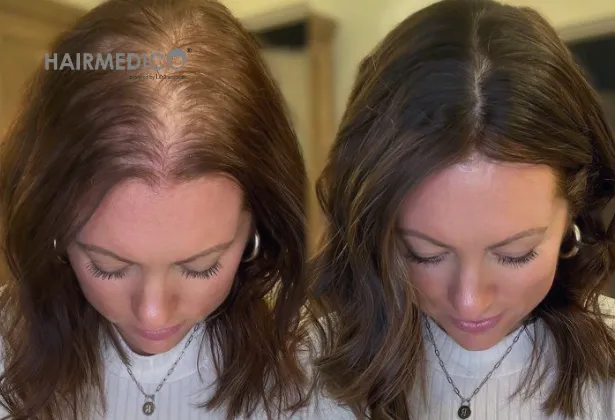
Hair loss continues to affect millions worldwide, prompting many to seek permanent, effective restoration solutions. One of the most popular treatments in 2025 is the 3500 grafts hair transplant, suitable for individuals with moderate to advanced thinning. This procedure offers dense coverage and natural results when performed by experienced professionals using modern techniques.
In this professional article, we’ll walk you through everything you need to know about 3500 grafts hair transplant before and after: who it’s for, what to expect, the surgical process, recovery stages, and real-world patient results.
A graft refers to a follicular unit that contains one or more hair follicles. On average, 3500 grafts equal about 7,000 to 9,000 hairs, depending on hair characteristics and follicular density.
This amount is ideal for:
Rebuilding the front hairline
Increasing density in the crown and mid-scalp
Restoring volume in thinning areas
Improving facial framing through hair design
You may be a suitable candidate for a 3500 graft hair transplant if you:
Have moderate to advanced hair loss (Norwood scale III to V)
Possess a healthy and dense donor area
Are in good general health
Have realistic expectations
Are committed to proper post-op care
A personalized consultation with a hair transplant specialist is essential to determine suitability and customize the treatment plan.
Before undergoing the procedure, patients go through several preparatory steps:
Detailed medical and scalp assessment
Digital analysis of donor and recipient areas
Custom hairline design based on facial anatomy
Preoperative instructions: avoid smoking, alcohol, and blood thinners
Photographs are also taken to document baseline conditions for post-operative comparison.
A 3500 graft transplant usually takes 6 to 9 hours in a single day and is performed under local anesthesia. The most common techniques used in 2025 are FUE (Follicular Unit Extraction) and DHI (Direct Hair Implantation).
Key steps include:
Anesthesia – Local numbing of donor and recipient areas.
Extraction – Individual grafts are removed using precision micro-punch tools.
Preparation – Grafts are sorted and preserved under sterile conditions.
Implantation – Grafts are inserted into tiny incisions, aligned with natural growth direction.
The result is seamless, natural-looking hair regrowth when performed by skilled professionals.
While recovery times vary by individual, here’s a typical post-op timeline:
Days 1–3: Mild redness, swelling, and tightness in the treated area.
Days 4–7: Formation of scabs; avoid touching or scratching.
Days 10–14: Scabs begin falling off naturally.
Weeks 2–4: Shock loss occurs—transplanted hairs temporarily fall out.
Months 3–6: New hair starts to grow.
Months 6–9: Density and hair texture improve noticeably.
Months 12–15: Final results become fully visible.
Proper aftercare, including using recommended shampoos and avoiding direct sunlight, greatly impacts the outcome.
The transformation from a 3500 graft hair transplant is significant, especially for patients with thinning at the hairline, temples, and crown. Common results include:
A youthful, symmetrical hairline
Enhanced volume at the crown
Thickening of thinning areas
Aesthetic facial framing
To view real patient outcomes, visit the HairMedico Before and After Gallery featuring verified case studies and progress photos.
Here is an approximate timeline of hair growth following the procedure:
Month 1: Healing begins; mild redness fades.
Months 2–3: Shedding phase (shock loss); follicles go dormant.
Month 4: Initial regrowth of fine hairs begins.
Months 5–6: Noticeable thickening and coverage improvement.
Months 7–9: Substantial growth and improved hair texture.
Months 10–12: Final density and styling flexibility become visible.
Patients should note that individual responses may vary based on genetics, age, and health.
Technology and technique have advanced significantly, making hair restoration safer and more effective than ever. In 2025, advantages include:
Minimally invasive methods (FUE, DHI) with quick recovery
High graft survival rates
Precision digital hairline design tools
Custom planning software and AI support
Global expertise and affordable medical tourism options (e.g., in Turkey)
These innovations ensure that patients can achieve natural, lasting results with minimal discomfort.
Pricing varies depending on location, clinic reputation, and the surgeon's expertise. On average:
Turkey: $2,000 – $4,500
Europe/UK: $6,000 – $10,000
USA/Canada: $8,000 – $15,000
Cost factors include:
Technique used (FUE, DHI, Sapphire FUE)
Post-op care and medications included
Surgeon’s qualifications and clinic infrastructure
Clinics that offer transparent pricing, patient galleries, and certifications are your best bet.
Your choice of clinic directly impacts the success of your procedure. Key criteria to consider:
Board-certified, experienced hair transplant surgeons
Use of advanced technology and proven techniques
Clean, accredited facilities
Verified patient reviews and photo galleries
Personalized consultations and realistic planning
One globally trusted option is HairMedico, led by Dr. Resul Yaman, known for his natural results and patient-focused care. See actual results at the HairMedico Before and After Gallery.
A 3500 grafts hair transplant in 2025 offers powerful, natural-looking results for individuals with moderate to advanced hair loss. With modern techniques, expert execution, and the right aftercare, it’s now possible to restore not just your hair—but your self-esteem and appearance.
Take the first step toward transformation. For real cases, patient journeys, and visible proof, explore the HairMedico Before and After Gallery and discover what's possible.